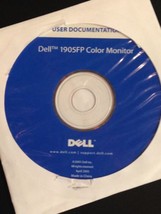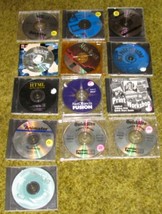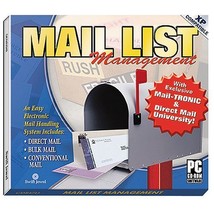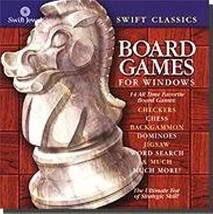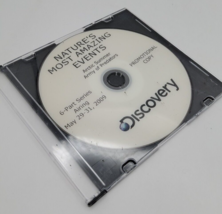Elementary Os 7 32-Bit And 64-bit Dvd Stable and 49 similar items
Free Shipping
ELEMENTARY OS 7 32-Bit and 64-bit DVD Stable LIVE/INSTALL Update Forever USA
$7.91
View full item details »
Shipping options
Estimated to arrive by Tue, Jun 17th.
Details
FREE via USPS Media Mail (2 to 9 business days) to United States
Offer policy
OBO - Seller accepts offers on this item.
Details
Return policy
Purchase protection
Payment options
PayPal accepted
PayPal Credit accepted
Venmo accepted
PayPal, MasterCard, Visa, Discover, and American Express accepted
Maestro accepted
Amazon Pay accepted
Nuvei accepted
View full item details »
Shipping options
Estimated to arrive by Tue, Jun 17th.
Details
FREE via USPS Media Mail (2 to 9 business days) to United States
Offer policy
OBO - Seller accepts offers on this item.
Details
Return policy
Purchase protection
Payment options
PayPal accepted
PayPal Credit accepted
Venmo accepted
PayPal, MasterCard, Visa, Discover, and American Express accepted
Maestro accepted
Amazon Pay accepted
Nuvei accepted
Item traits
| Category: | |
|---|---|
| Quantity Available: |
88 in stock |
| Condition: |
Brand New |
| Type: |
Operating System |
| MPN: |
ELEMENTARYOS6.1 |
| Language: |
English |
| Format: |
DVD |
| Brand: |
elementary os |
| Minimum Hard Drive Space: |
50 MB |
| License Category: |
Lifetime |
| Minimum RAM: |
1 GB |
| Model: |
elementary os 6.1 |
| Minimum Processor Speed: |
1 GHz |
| For Operating Systems: |
Linux |
| Number of Devices: |
Unlimited |
Listing details
| Seller policies: | |
|---|---|
| Shipping discount: |
Seller pays shipping for this item. |
| Price discount: |
10% off w/ $25.00 spent |
| Posted for sale: |
More than a week ago |
| Item number: |
1487217247 |
Item description
ELEMENTARY OS 7 32-Bit and 64-bit DVD Stable LIVE/INSTALL Update Forever USA
Helping you get the apps
you need
As always, AppCenter is
the centerpiece of elementary OS. The primary purpose of any operating system
is to support the apps that you use to work, play, and express yourself
creatively. In the latest version of AppCenter we?ve worked on making app
descriptions more engaging with more information, making it easier to update to
the latest versions of apps, and improving support for sideloading and alt
stores. We?ve also worked on improving AppCenter?s responsiveness?making sure
you can comfortably use it when tiling and on small displays as well as better
using space on large displays.
AppCenter
can be used comfortably while tiled or on small displays
We?ve completely
rewritten the way navigation works in AppCenter and now support two-finger
swipe gestures to navigate back. The entire app loads much faster and provides
more feedback when running background tasks via an overlay bar in the bottom
right or left corner.
App Descriptions
The biggest change you?ll
notice when viewing app info pages is the improved emphasis on screenshots.
Screenshot carousels now fill the width of the window, showing more screenshots
at once. They can now also be accompanied by their own captions, which can help
describe individual features as well as making pages more accessible to folks
with vision-related disabilities. And finally each screenshot now sits on a
card that uses the app?s accent color, showing off more of the developer?s
personality.
App Info
views show more screenshots with captions and brand colors
Knowing how actively
developed an app is and how engaged the developer is with their community is an
important factor in deciding which apps to install. We now help you know what
to expect by showing an icon when an app uses an older, unsupported platform as
well as showing up to 5 recent releases and their release notes instead of just
the latest release. We also now show links to resolved tickets in an app?s
issue tracker per release, so you verify that app developers will take your
feedback into consideration.
Getting Updates
Staying up to date with the
latest versions of apps is something we hear often is very important to folks
using elementary OS. Flatpak makes it simple for developers to publish app
updates quickly and now you can get those updates automatically. If you?d still
like to check for updates on your own time or want to force a manual refresh,
there?s now a handy menu option that you can use.
Operating
system updates are now installed offline and app updates can happen
automatically
AppCenter now also
installs operating system updates offline, ensuring that important services are
restarted correctly and avoiding odd crashes or version mismatches when
updating. Packages are downloaded and prepared during your session and then
quickly installed whenever you decide to restart, without forced or automatic
shutdowns.
Sideloading Alt Stores
Sideloading apps and
using alt stores like Flathub is a major feature of elementary OS and a
competitive edge over closed platforms that only let you install apps from a
locked down store. In this release we?ve made several improvements to smooth
out the experience of using alt stores based on your feedback and the latest
cross-platform standards.
The
Sideload app makes installing Flatpak apps and configuring alt stores simple
There?s no longer a
warning dialog every time you install an app that?s supplied by an alt store,
instead we show an unobtrusive icon alongside the app?s other content warnings
letting you know that elementary hasn?t reviewed this particular app.
Even apps
sideloaded from alt stores like Flathub can show brand colors
Apps from AppCenter could
always use their own brand colors to make their app info pages feel unique and
now apps sideloaded from alt stores can show brand colors too, thanks to the
latest additions in the AppStream standard.
Web Apps
iCloud
Numbers running as a saved web app
In the theme of accessing
the apps you need, we?re shipping the very latest GNOME Web 43 which includes
support for creating web apps which show in the applications menu. They can
have their own settings including privacy controls and can even run in the
background. Installed web apps can be managed from inside GNOME Web.
Empowering you with new
features and settings
Feedback
helps you report issues and request new features directly to the developers
The ability to send
feedback directly to developers, see development happen transparently, and receive
fixes and new features as updates quickly is one of our greatest strengths over
both proprietary platforms and traditional Linux distributions. The Feedback
app is a critical component in beginning this loop, so this cycle we?ve brought
some major improvements to it including instant launch times, much better
coverage of installed apps, settings, and desktop components, and you can now
access the Feedback app directly from the applications menu. We?ve also
improved keyboard navigation and responsiveness for small displays, and added
the ability to quickly double click a list item to launch.
Installation, Initial Setup Onboarding
We?ve done a decent
amount of work this cycle on reducing the number of screens in the Installer
and providing more information to help you make informed decisions. For
example, we now warn about connecting to power when on battery using an infobar
instead of a separate page and we?ve introduced a combined ?Before You Install?
page that includes warnings about things like virtual machines, developer
builds, and system requirements all in one step. And speaking of virtual
machines, we?ve resolved issues that made the installer window too large to be
interacted with on some virtual machines.
During Initial setup, we
now detect if you use the right mouse button for clicking and offer to switch
to a left-handed mouse button order. There?s also a new view that will appear
if your device doesn?t have network access instructing you how to get
connected.
Left: Left-handed primary click is now detected | Right: Initial
setup guides you to connect to the Internet
Onboarding includes a new
view for configuring automatic updates, as well as the addition of a ?Sunset to
Sunrise? option for the dark style.
New
features and settings are offered during onboarding like scheduled dark mode
and automatic updates
Office Productivity
Mail now sports a
more-modern, flatter design as a first step towards work on making it more
responsive. The unified inbox now supports Microsoft 365 accounts. And multiple
potential crashes and freezes have been resolved.
Mail now
has a flatter design
Tasks now has offline
support for newly created task lists and it makes sure to synchronize your
remote lists when the network becomes available again. Plus it now sends
notifications when a task is due. Online Accounts settings now also includes
offline support for CalDAV accounts and the ability to choose a refresh rate
for IMAP accounts.
A long asked-for feature,
you can now choose to select folders with a single click instead of activating
them in Files, Windows style. Quite a bit of work has gone into making sure
multiple click modes are supported and working as expected. We?ve also spent
extra attention dialing in the behavior of keyboard shortcuts, especially
regarding copy/paste and selection shortcuts across different view modes and
with different types of file selections.
Files now
has a double-click option
Printer settings received
special attention with several redesigns as well as new features like being
able to clear the print queue per printer and a much clearer ink levels view.
Redesigned
printer settings with more control over the print queue
We?re also shipping the
latest Archive Manager and Document Viewer from GNOME 43. These releases
improve support for dark mode, Flatpak portals like the native file chooser, as
well as fix bugs and improve reliability.
Multimedia
As music streaming
services have emerged, there?s been a shift away from the old paradigm of
importing music from CDs, carefully curating playlists, and syncing music from
your computer to mobile devices. We?ve received lots of feedback that Music
wasn?t meeting folks needs and the old code base was becoming prone to issues.
The new
Music with a much more focused design
This cycle we?ve
completely rewritten Music from scratch with a much more focused design built
around quickly queuing up and playing individual audio files or your local
music collection. We?ve heard that the new design is better for folks who just
need a fast way to preview audio files that they?re using in their other
projects, as well as for folks that still carefully curate their own local
music collection and don?t want to compete with an app for fine grained control
of their library?s organization scheme.
The new Music 7 already
has better support for reading track metadata such as album art, works as you?d
expect with system-wide media controls, and can be tiled and resized to fit
small and large displays. We?re excited to shape future versions of this app
with your feedback, so make sure you let us know what kind of features you?d
like to see!
Videos can
now be controlled from the sound indicator
Likewise, Videos now
appears in the sound indicator alongside other media players. And in both
System Settings and the Panel, we now use more information to assign accurate
icons to audio devices.
System Settings
In elementary OS,
settings are meant to make the operating system more accessible to a wider
range of people with various needs and ways of working.
Left: New power profile management | Right: Redesigned
shortcut settings
This release provides
power profiles management, including a performance mode for devices that
support it. Expect much improved battery life for mobile devices with Power
Saver mode. And you can now scroll both horizontally and vertically on the
power indicator to change display brightness.
We?ve added powerful
features like the ability to set custom Terminal commands for each hotcorner
and a redesign keyboard shortcuts settings makes it easier to disable shortcuts
or revert them to defaults, as well as much better custom shortcut management.
You can now also launch the Shortcuts app from the applications menu and we?ve
added the option to open and close the Multitasking view using the Super key.
Multitasking
settings with per-corner Terminal commands
Keeping your device
secure is paramount, which is why we?ve added a new option to forbid new USB
devices from connecting while your device is locked, we?ve updated network
settings and the network indicator to support WPA3 networks, and we?ve added
support for offline firmware updates.
Our localization team has
also been hard at work and Central Kurdish is now available as an installable
language, we now support installation and removal of languages with 3-letter
codes, and we support the Rime input method for Chinese.
Performance
I want to make a special
note here about performance. In just about every section I could have
individually written about performance over and over again. The team has spent
quite a bit of time tracking down slowdowns, reworking old code, and optimizing
to make everything happen as quickly and responsively as possible and in the
most extreme scenarios. I can?t emphasize enough how big a part reducing
latency plays in our vision for empowering you to do your best.
Evolving our developer
platform and design language
We always try to strike a
balance between staying up on modern design concepts while avoiding trendiness
to create our unique style. With OS 7 you should notice a push towards
responsive app design?ensuring that apps can be used on both small and large
displays?and a big change to unify the design of app icons. Part of this shift
is enabled by using the latest technology in our platform like Gtk 4 and we?re
motivated by making sure elementary OS runs well on the kinds of devices that
power your everyday life.
Iconography
Nearly all app icons have
been redesigned to be based on a uniform tile shape with some elements overlaid
or layered. The new design language for app icons feels more modern while still
retaining the pixel-fitted charm you?re used to and allowing for playful
expression. We hope this change in direction makes it simpler for app
developers to create high quality app icons that feel like they fit in on
elementary OS.
Redesigned
app icons
In addition to
modernizing app icons, several color and symbolic system icons have been
updated to match the latest brand colors, to use the same tile base shape as
app icons, to soften out shapes, and to improve legibility as always.
System
icons have been updated with softer corners, new brand colors, and more
There?s now also an Icon
Browser app available in AppCenter where you can see all of the icons shipped
with the elementary platform. You can search or view icons by category as well
as see what sizes and styles an icon comes in and even get a quick code snippet
to use in your app.
The new
Icon Browser app
Gtk 4 Responsive Design
Building great modern
apps requires a modern toolkit. Gtk 4 brings a ton of performance and rendering
improvements on its own as well as features that make it easier to make apps
responsive and animated. We?re excited to push the limits of the toolkit and
we?ll be staying up to date with point releases of Gtk 4 as part of our Flatpak
platform. Several apps and desktop components have already been ported to Gtk 4
such as Calculator, Sideload, Shortcuts, Music, and Onboarding and several more
Gtk 4 ports will land throughout the life cycle of OS 7.
As mentioned a few times
already, a big part of our design language going forward will be informed by
making sure apps run great on both large and small displays. More and more we
do our computing from tablets and mobile devices as well as our desktops and
notebooks. With OS 7 we?ve worked to make apps much more tile-able on desktops
as well as notebooks with even very small display resolutions. Apps like
AppCenter and Music work much better when space constrained and efforts here
have even resolved issues in virtual machines, for example. Expect more updates
throughout the life cycle of OS 7 working towards responsiveness across the
entire operating system.
Granite
The latest version of our
app framework Granite as well as our system stylesheet have been updated to
support Gtk 4 and come with a host of new features and API changes to make
building apps quick and straightforward.
In Gtk 4, style class constants have moved from Gtk itself into
the platform frameworks. This means that all of the supported style class
constants in the elementary stylesheet are now provided by Granite. This
includes classes you?re familiar with like the ones for setting text colors as
well as the ones for setting background colors on sidebars or in views, plus
some new ones like RICH_LIST for setting up padding and margins on ListBoxes.
A new Granite.Placeholder widget was introduced to replace
AlertView and Welcome with a single more flexible widget. It supports all the
usual cases like welcome screens with buttons, embedded alerts, and
placeholders for lists. It supports markup in descriptions and you can even
uses style classes like ACCENT, WARNING, or ERROR to automatically color title text.
Plus, widgets have been
reworked to set all of their margins and padding from Gtk.CSS?meaning they
scale appropriately with the system text size?and several widgets have been
made more responsive for large and small displays.
Every release comes with removals
and this migration to Gtk 4 comes with quite a few of them. We?re excited to
remove several utilities that are better supported in Gtk and GLib upstream,
including the Settings class, Logging, Command Launching, several drawing
functions now covered by Gtk.CSS, DynamicNotebook since you can now get a great
tab bar widget from Adwaita, and others. In each case we looked at existing
apps and made sure they could migrate to Gtk 4 without losing functionality and
in many cases their code was made more robust and more simple by using
functions provided by upstream libraries.
Tools
Code has also been the
focus of responsiveness efforts and can now be tiled even on tiny notebook
displays. The first changes you might notice are the full-height project sidebar
and the new elementary light and dark styles for the source view. Code now also
optionally follows the system-wide dark style preference.
Code in
light and dark styles
Both Find on Page and
Find in Project are now available from the app?s menu instead of in the
headerbar and they both now support regular expressions. Project-wide searches
are now also pre-filled with the selected text and the number of search results
is now present in the search bar. Options for hiding and showing panels are now
all present in a compact set of linked buttons in the app?s menu as well.
Hidden folders are now shown in your project?s tree in the sidebar and manually
selecting a project will hide tabs associated with other projects.
Terminal
in light and dark styles
|
Why are we showing these items?
Search Results
Software, software"software" Category "Software"
|

-
Refine your browsing experience
We can show you more items that are exactly like the original item, or we can show you items that are similar in spirit. By default we show you a mix.
This item has been added to your cart
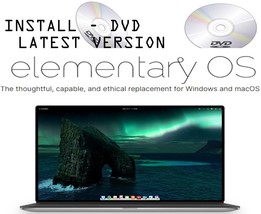 ELEMENTARY OS 7 32-Bit and 64-bit DVD Stable LIVE/INSTALL Update Forever USA added to cart.
88 available in stock
ELEMENTARY OS 7 32-Bit and 64-bit DVD Stable LIVE/INSTALL Update Forever USA added to cart.
88 available in stock
View Cart or continue shopping.
 Please wait while we finish adding this item to your cart.
Please wait while we finish adding this item to your cart.
Get an item reminder
We'll email you a link to your item now and follow up with a single reminder (if you'd like one). That's it! No spam, no hassle.
Already have an account?
Log in and add this item to your wish list.



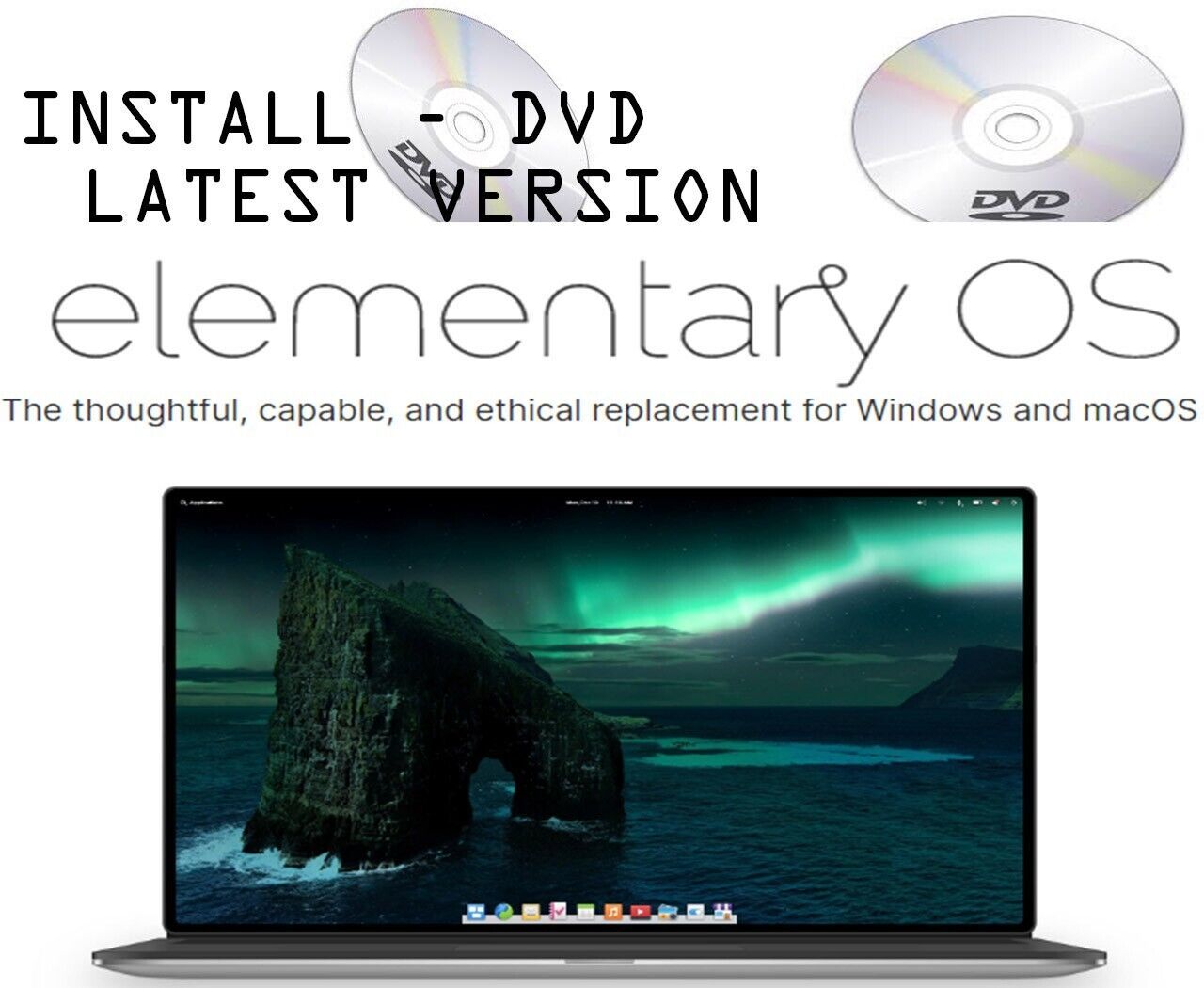
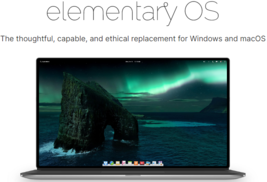


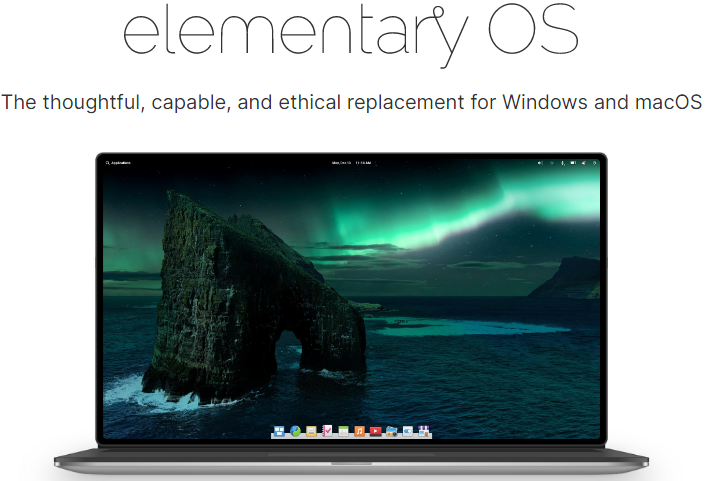





![Winnie the Pooh Kindergarten w/French and Spanish (Jewel Case) [CD-ROM] ... - $1.09 Winnie the Pooh Kindergarten w/French and Spanish (Jewel Case) [CD-ROM] ... - $1.09](https://images-bucket.bonanzastatic.com/afu/images/2375/0240/51/61uqn3p834l._sl1500__thumb200.jpg)
![School Zone - Go Fish Alphabet Card Game [CD] - $1.39 School Zone - Go Fish Alphabet Card Game [CD] - $1.39](https://images-bucket.bonanzastatic.com/afu/images/2375/2273/98/31bcpkx4nel._sl1500__thumb200.jpg)
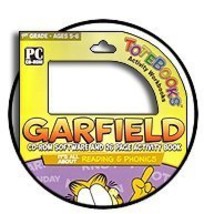
![Mathematics Calculus II [CD] [CD-ROM] - $1.97 Mathematics Calculus II [CD] [CD-ROM] - $1.97](https://images-bucket.bonanzastatic.com/afu/images/2630/6482/58/31b8d7wd23l._sl1500__thumb200.jpg)
